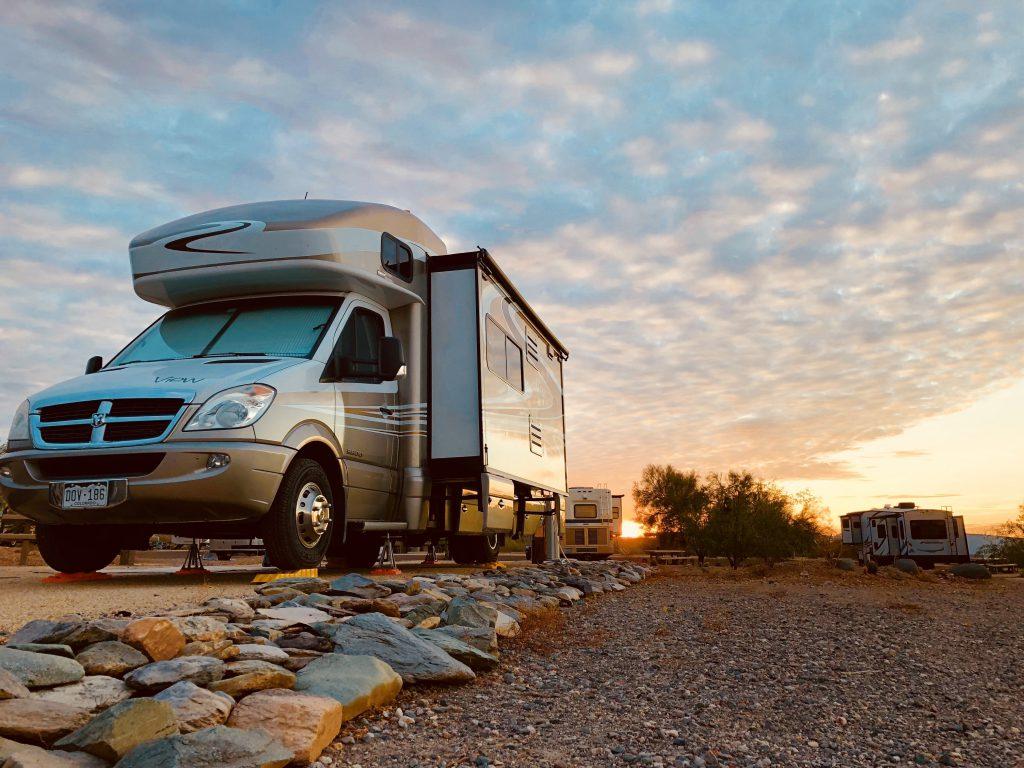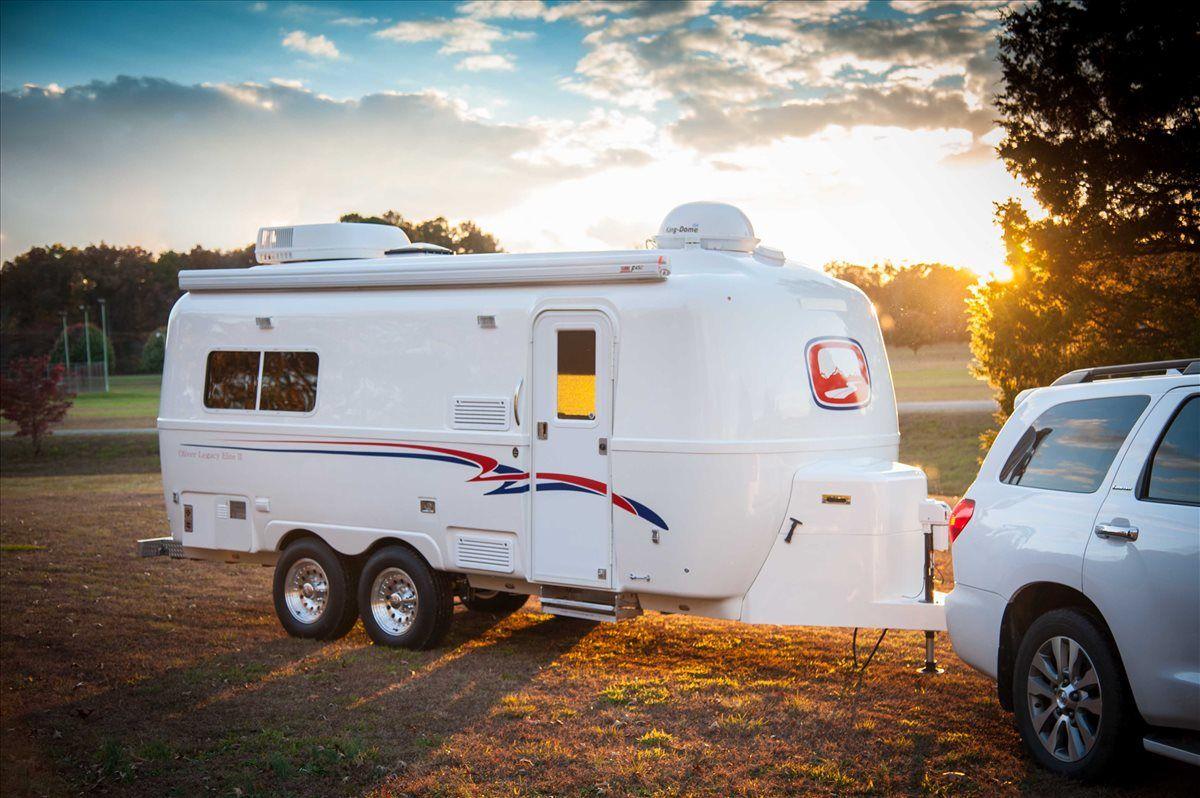Flat tire or tire blowout could easily lead to serious traffic accidents and that is why it’s important to equip your vehicle with a TPMS. Tire Pressure Monitoring System (TPMS) is a system designed to monitor the tire pressure of vehicles and then issue warnings as soon as something goes wrong.
From ordinary cars to sizable RVs, all types of vehicles in circulation would benefit from the usage of a TPMS. Having a TMPS around could save you a considerable amount of money on repair expenses as well as towing fees. As a result, you should get the best tire pressure monitoring system which could bring you peace of mind and confidence in any road trip!
Nonetheless, with so many models and manufacturers on the market, finding the best RV tire pressure monitoring system for your vehicle is not an easy task. Besides the huge number of available products, the best tire pressure monitoring system for a car may not work the same on a recreational vehicle. For those who are shopping for the first TPMS, reading multiple tire pressure monitoring system reviews is necessary in order to get a suitable product.
Learn more about the best-rated tire pressure monitoring systems for RV and cars, their benefits, and how you can make a good choice through this article.
Contents
- Best Tire Pressure Monitoring System Comparison Chart
- Best Tire Pressure Monitoring System For RV
- 1. TireMinder A1A tire pressure monitoring system – Best of the best
- 2. EEZTire T515 tire pressure monitoring system – Editor’s choice
- 3. Tire-Safeguard tire pressure monitoring system – Editor’s choice
- 4. Bellacorp tire pressure monitoring system – Best bang for the buck
- 5. TST-507 tire pressure monitoring system
- 6. TireTraker TT-500 tire pressure monitoring system – Editor’s choice
- Best Tire Pressure Monitoring System For Car
- What Is TPMS?
- How Do Tire Pressure Sensors Work
- How to Install a TPMS in Car
Best Tire Pressure Monitoring System Comparison Chart
| Best TPMS | Sensors | Price | Our Reviews |
|---|---|---|---|
| TireMinder A1A - Best TPMS for RV | 6 | $$$$$ | 49 |
| EEZTire - Editor's Choice | 6 | $$$$ | 49 |
| Tire-Safeguard - Editor's Choice | 6 | $$$$ | 48 |
| Bellacorp | 6 | $$$$ | 48 |
| TST 507rv | 6 | $$$$$ | 47 |
| TireTraker TT-500 - Editor's Choice | 6 | $$$$ | 49 |
| ZEEPIN | 4 | $$ | 46 |
| YOKARO Wireless TPMS | 4 | $$ | 46 |
| CACAGOO Wireless TPMS | 4 | $$ | 46 |
| VESAFE Wireless TPMS | 4 | $$ | 48 |
Best Tire Pressure Monitoring System For RV
1. TireMinder A1A tire pressure monitoring system – Best of the best

Specifications:
- Dimension: 7.5 x 2.2 x 4.5 Inches
- Weight: 32 Ounces
Why this is the best
Obviously, TireMinder A1A deserved the first name on our list. Capable of monitoring 22 tires at the same time, TireMinder A1A Tire Pressure Monitoring System is viewed by many to be the best TPMS for RV. The TireMinder system could issue various audio and visual alerts to tell you exactly what kind of problem is happening. Every six seconds, the TPMS shall run a complete self-diagnostic in order to provide the driver with timely warnings
With the ability to monitor pressure as high as 232 Psi, the TireMinder A1A Tire Pressure Monitoring System is compatible with a wide range of recreational vehicles currently in circulation. In case you have to disconnect your trailer from the towing vehicle, the TireMinder system supports front or rear disconnecting. To make sure that the TPMS operation is immune to electronic interference, the system kit comes with a signal booster. In addition to that, you would receive O rings, a mounting bracket, sensor locks, and spare batteries. Post-purchase support, a free battery exchange program, and around-the-clock customer service are available to customers.
Things we liked:
- Come with every component you need
- Able to monitor a good number of tires at once
- The best tire pressure monitoring system for RV
Things we didn’t like:
- The installation process is a bit complex
- Sensor failures are occasionally reported
2. EEZTire T515 tire pressure monitoring system – Editor’s choice

Specifications:
- Dimension: 10.9 x 7.9 x 3.3 Inches
- Weight: 24.8 Ounces
Why it’s an editor’s choice
If you frequently travel in low light conditions, EezTire T515 is the best RV tire pressure monitoring system you can get. Utilizing an innovative backlight arrangement, it’s easy for you to see the readings on the screen throughout the day. Able to handle up to 22 tires along with a maximum pressure of 210 Psi, the EezTire system should match the needs and requirements of any RVer.
In terms of alerts, EezTire T515 Tire Pressure Monitoring System would promptly transmit audio and visual warnings if something goes wrong with the tires. The alert values are configurable through the system screen, therefore, you could customize the TPMS to better suit your demands. While the signal range of the TPMS is usually adequate, it’s a good idea to use a signal booster if your rig is over 53 feet.
Things we liked:
- Robust operation
- Well made and tough
- Easy-to-read display screen
Things we didn’t like:
- Inconstant performance
- Mediocre customer service
3. Tire-Safeguard tire pressure monitoring system – Editor’s choice
Specifications:
- Dimension: 12 x 9 x 3 Inches
- Weight: 64 Ounces
Why it’s a editor’s choice
Talking about the best tire pressure monitoring system for RV, it would be a mistake if we did not mention Tire-Safeguard. Possessing convenient flow-through sensors, the Tire-Safeguard Tire Pressure Monitoring System lets you refill your tires without having to remove the sensors beforehand. As a result, the Tire-Safeguard system is well appreciated by people who want to use a hassle-free TPMS. Thanks to the excellent signal range, the TPMS has no need for a signal booster in most cases.
Regarding the operation, users of Tire-Safeguard Tire Pressure Monitoring System could configure the warning levels and the reading units as they see fit. There are a couple of optional reading units available at your disposal: For pressure, you have Psi/Bar and for temperature, you have Celsius/Fahrenheit. When the sensors detect an issue, the system monitor shall notify the driver using icons, colors, and audible warnings. The system works 24//7 without interruption so you can rest assured knowing that your vehicle is protected.
Things we liked:
- Deliver accurate readings
- Good choice for long RVs
- Reliable and rugged sensor
Things we didn’t like:
- The price tag is comparatively high
- Customer service is not responsive
4. Bellacorp tire pressure monitoring system – Best bang for the buck

Specifications:
- Dimension: 9.7 x 6.8 x 2.6 Inches
- Weight: 23.2Ounces
Why we love it
Known for versatility and flexibility, the Bellacorp Tire Pressure Monitoring System is compatible with a variety of vehicles from small trailers to 18-wheelers. The Bellacorp system utilizes a wide and bright display which means you could check out the readings with relative ease. With a signal range between 40 and 60 feet, there is no need to use a repeater for most of the time.
Able to operate continuously for 6 days on a single charge, Bellacorp Tire Pressure Monitoring System is a nice tire pressure monitoring system for travel trailers. The presence of anti-corrosion sensor caps ensures that air leakage is no longer a problem that requires your attention. Since the sensors are waterproof up to 3 feet, they could perform reliably when exposed to rainy weather and wet terrains. Aside from the sensor and monitors, you would also receive suction or hardwire mounting to set up the system. Bellacorp is best RV tire pressure monitoring system for the price. No doubt!
Things we liked:
- Quality-built and dependable
- Responsive customer service
- Simple to install and program
Things we didn’t like:
- Require metal stem
- Some components are missing
5. TST-507 tire pressure monitoring system

Specification
- Dimension: 9.7 x 6.8 x 2.6 Inches
- Weight: 23.2Ounces
Why we love it
Designed specifically for recreational vehicles, TST-507 Tire Pressure Monitoring System is a solid product for RVers. It’s considered by many RV tire pressure monitoring system reviews to be the best trailer tire pressure monitoring system in terms of convenience. With 30-second data update intervals, the Truck System Technologies product provides the driver with the latest readings of the tires. The compact display is simple to read and can be set up in no time.
Since the TST-507 Tire Pressure Monitoring System uses flow-through sensors, it’s easy to refill the tires whenever you need them. As soon as the monitoring system is up and running, it should proceed to display temperature and pressure readings immediately. Warning values are fully configurable so all you have to do is to set the alarm level as you like.
Things we liked:
- High endurance
- Simple to calibrate
- Straightforward installation
Things we didn’t like:
- Quite expensive
- May weaken the valve stems
6. TireTraker TT-500 tire pressure monitoring system – Editor’s choice

Specification
- Dimension: 2.44 x 3.94 x 0.69 Inches
- Weight: 11 Ounces
Why we love it
If you have money to spare and want to get a high-performance TPMS, TireTraker TT-500 Tire Pressure Monitoring System is a great option. While it seems to be quite an expensive investment, the value of the TireTraker system totally justifies the price tag. There are a lot of mounting methods for you to choose from, therefore, it’s simple to set up this monitoring system. Because of the wide LCD display screen, you can check out the state of the vehicle tires with relative ease
Featuring a user-friendly interface, the TireTraker TT-500 Tire Pressure Monitoring System allows drivers to program and calibrate it in a blink of an eye. Besides the monitor and sensors, you also receive a USB charging cord, four sensor batteries, four sensor locks, a mounting bracket, and anti-seize compounds. Customer service is available 7 days a week so you could require assistance anytime you want. The TireTraker TPMS is backed with a limited lifetime warranty which speaks a lot about its performance in the field.
Things we liked:
- Helpful instruction manual
- Nice limited lifetime warranty
- Excellent post-purchase support
Things we didn’t like:
- High acquisition cost
- Sensors’ reliability should be improved

Best Tire Pressure Monitoring System For Car
1. ZEEPIN tire pressure monitoring system – Best of the best
Specification
- Dimension: 8.1 x 5.7 x 2.4 Inches
- Weight: 9.1 Ounces
Why this is the best
Reliable and dependable, Zeepin Solar Power Tire Pressure Monitoring System is considered to be the best tire pressure monitoring system by TPMS reviews. The Zeepin TPMS supports USB charging as well as solar charging, therefore, you have lots of flexibility while using it. Due to the use of quality 345mA built-in lithium batteries, you don’t have to recharge them too often. As a wireless tire pressure monitoring system, this product utilizes four sensitive sensors that provide the driver with accurate readings in a variety of conditions.
Due to the big screen, Zeepin Solar Power Tire Pressure Monitoring System lets you acquire important information without much difficulty. Once the Zeepin TPMS concludes that there is something wrong with the tire pressure/temperature, the system shall issue visual and audio alarms at once. The alarm values are fully adjustable and that means each driver could customize the system to fit their vehicle setup. In addition to that, you could also change the units of the temperature and pressure.
Pros
- Highly sensitive and robust sensors
- Straightforward installation/calibration process
- The best tire pressure monitoring system for car
Cons
- May get pretty hot
- Mediocre instruction manual
2. YOKARO tire pressure monitoring system – Editor’s choice

Specification
- Dimension: 1.3 x 1.3 x 2.1 Inches
- Weight: 6.4 Ounces
Why it’s an editor’s choice
For people who want to have a straightforward and dependable TPMS, the Yokaro Tire Pressure Monitoring System is an excellent choice. The Yokaro product is held in high regard by RV tire pressure monitoring system reviews due to its compactness and simplicity. With a pressure error of ±1.5 Psi, the pressure readings provided by this monitoring system is relatively accurate compared to other product available on the market. The maximum pressure the TPMS could work with is 87 Psi which is more than enough for most of the time.
About its performance, Yokaro Tire Pressure Monitoring System employs waterproof, anti-thief sensors that can operate reliably in challenging weather. When the tires come to a stop, the sensors would automatically go into sleep mode in order to save energy. The range of the system sensors is about 8 meters so it should fit most cars in circulation without much difficulty. To show confidence in the TPMS, Yokaro offers its customers a 12-month warranty as well as replacement sensor service.
Pros
- Alarm values and reading units are adjustable
- Highly compact display screen and rugged sensors
- Rated highly by tire pressure monitoring system reviews
Cons
- Take some time to program
- Quality control is less than ideal
3. CACAGOO tire pressure monitoring system – Editor’s choice

Specification
- Dimension: 3.1 x 1.5 x 0.5 Inches
- Weight: 13.4 Ounces
Why it’s an editor’s choice
Able to bright and clear readings with its LCD display screen, Cacagoo Tire Pressure Monitoring System is a solid product. When it comes to ease of use, the Cacagoo model is the best tire pressure monitoring system money can buy. Through the system LED screen, you can adjust anything from alarm values to reading units. Similar to other tire monitoring systems, the pressure reading is available in Psi and Bar while the temperature reading is available in Celsius and Fahrenheit. All it takes to power each of the TPMS sensors is a CR1632 battery which is quite easy to find.
In most cases, it should take 15 minutes or so for you to install the Cacagoo Tire Pressure Monitoring System.
As the system sensors are IP67 rated, the Cacagoo TPMS shall work continuously regardless of outside weather and road conditions. Whenever the pressure or temperature of any tire gets out of predetermined values, the TPMS would immediately notify the driver using audio and visual warnings.
Pros
- High endurance sensors
- Wide and bright LCD screen
- Fast calibration and installation
Cons
- Loose battery caps and poor instruction
- Some customers receive defective sensors
4. VESAFE tire pressure monitoring system – Best bang for the buck

Specification
- Dimension: 7.8 x 5.3 x 2.6 Inches
- Weight: 18.4 Ounces
Why we love it
As a universal TPMS for cars, the flexibility of the Vesafe Tire Pressure Monitoring System earns a lot of praise from RV tire pressure monitoring system reviews. It is very easy to install the monitor of the Vesafe system, all you have to do is to put it in the cigarette lighter socket. With a pressure error of ±1.5 Psi and a temperature error of ±3 °C, the TPMS is able to offer precise readings in many situations and environments.
Powered by CR1632 batteries, the sensors of the Vesafe Tire Pressure Monitoring System could work for 2 years before new batteries are required. Since each of the sensors possesses its own label (RR, RF, LF, or LR), it’s easy to arrange the sensors in a correct manner. In the case you have to install a new sensor, simply engage the coding mode on the display and set up the sensors as usual.
Pros
- Reasonable price
- Hassle-free installation
- A plug-and-play product
Cons
- The system display is slightly dim
- Take some time to activate all sensors
What Is TPMS?
As mentioned above, TPMS is a system that is designed to monitor the state of the tires and its target is to stop potential accidents. Through a series of sensors, TPMS receives real-time information about the tires and then displays them to the driver. Therefore, the driver of the vehicle is kept up to date and if there is a problem, TPMS shall promptly issue catchy and audible warnings. Not every TPMS available in the market performs in the same way but the working principle is similar between products. Depending on the vehicle configuration, a tire pressure monitor system may come in as an integrated feature or an aftermarket solution.

Aside from preventing traffic accidents, TPMS also provides its users with a couple of benefits:
- Increase the vehicle fuel efficiency: Under-inflated tires increase the fuel consumption of your vehicle. For every 10% of under-inflation on each tire, the vehicle fuel efficiency shall drop by 1%. Thanks to TPMS, you are capable of keeping the tires fully inflated and reducing the operating expense of your vehicle.
- Extend the tire’s effective lifetime: Losses of pressure accelerate the wearing rate of the tires and lead to sudden failures. By using a TPMS, you could extend the lifetime of your tires and reduce the number of replacement tires required.
- Reduce carbon-monoxide emission: As under-inflated tires worsen the vehicle fuel efficiency, they also lead to a substantial increase in carbon-monoxide pollution. With a TPMS, you should be able to reduce the CO2 emission of your vehicle and protect the surrounding environment.
How Do Tire Pressure Sensors Work
Have you ever wondered how do TPMS work? Well, depending on the type of TPMS, tire pressure sensors either use the wheel revolution data (indirect) or measure the tire pressure/temperature by themselves (direct). “Where are the tire pressure sensors located?” you may ask. Well, an indirect TPMS doesn’t have sensors of its own and instead relies on the speed sensors of the vehicle ABS (Anti-lock Braking System). On the other hand, a direct TPMS possesses its own set of sensors which are firmly attached to the valve system of the vehicle wheels.

Indirect TPMS: How does it work?
Through the ABS speed sensors, an indirect TPMS receives data about the wheel revolution as well as the vehicle speed. A fully inflated tire is usually bigger and rotates slower than an under-inflated one. Based on that principle, indirect TPMS shall immediately notify the driver when at least one of the vehicle wheels appears to roll faster than normal. Generally speaking, an indirect TPMS is easy to use, simple to install, and relatively inexpensive compared to a direct TPMS.
In order to set up an indirect TPMS properly, you have to calibrate it beforehand by driving around with fully inflated tires for 20 to 60 minutes. Indirect TPMS would store the parameters acquired during this phase and use them as references. After that, the system is operational and it should continuously compare the rotations of the tires to the stored references. In case you need to reset the TPMS, all you have to do is hold a button on the dashboard or the system display. For most of the time, re-calibration is needed when the tire pressure has been adjusted.
Direct TPMS: How does it work?
A direct TPMS obtains necessary information about the tire pressure on each of vehicle wheel using its highly precise sensors. Almost all direct TPMS models available for purchase on the market belong to the wireless tire pressure monitoring system category. Each sensor possesses a serial number that distinguishes itself from the remaining sensors which allows independent observation and prevents confusion. Every data gathered by the sensors would be processed and analyzed by the system computer. In the case the TPMS computer concludes that there is a loss of tire pressure, a warning should be issued.
Similar to indirect TPMS, you have to calibrate direct TPMS, there are 2 options for you: drive around or take your vehicle to a nearby workshop. In most cases, direct TPMS works well on a wide range of platforms from motorcycles to heavy vehicles. Many direct TPMS models that come as aftermarket solutions don’t require specialized tools/complicated procedures to program and reset. Some advanced products offer a lot of options to assist the driver like remote monitoring, data logging, and so on. Usually, except on special occasions, you don’t really have to calibrate a direct TPMS regularly
How to Install a TPMS in Car
After equipping the best tire pressure monitoring system for your vehicle, let’s find out how to correctly install it. This won’t take much time if you’re an experienced RVer who fully understands the TPMS system. When you’re a first-time user, there is still an option to have an expert install TPMS for your car. But you definitely don’t want to visit a servicing shop each time you need to change or install a TPMS.
It’s better to pick the tire pressure monitoring system that comes with an installation kit. Avoid the products that feature complex mechanisms and need much time and energy for installation. Here you can take a look at the step-by-step procedure to successfully install a TPMS for your car.






Hi John. Looking at the recommended Cacagoo unit on Amazon, and here is part of the description:
4 TIRES MONITORED SIMULTANEOUSLY】See the real time air pressure and temperature for 4 tires on the screen. Each tire has own ID code. Gives you early warning of air leaks and other abnormal tire situations so corrective action can be taken and tire life can be extended. It is not suitable for motorhome, caravan, RV and trailers.
Why is this not recommended for RV trailers? What can happen? (I just received this as a Christmas gift for our travel trailer)
Thank you.
Lee